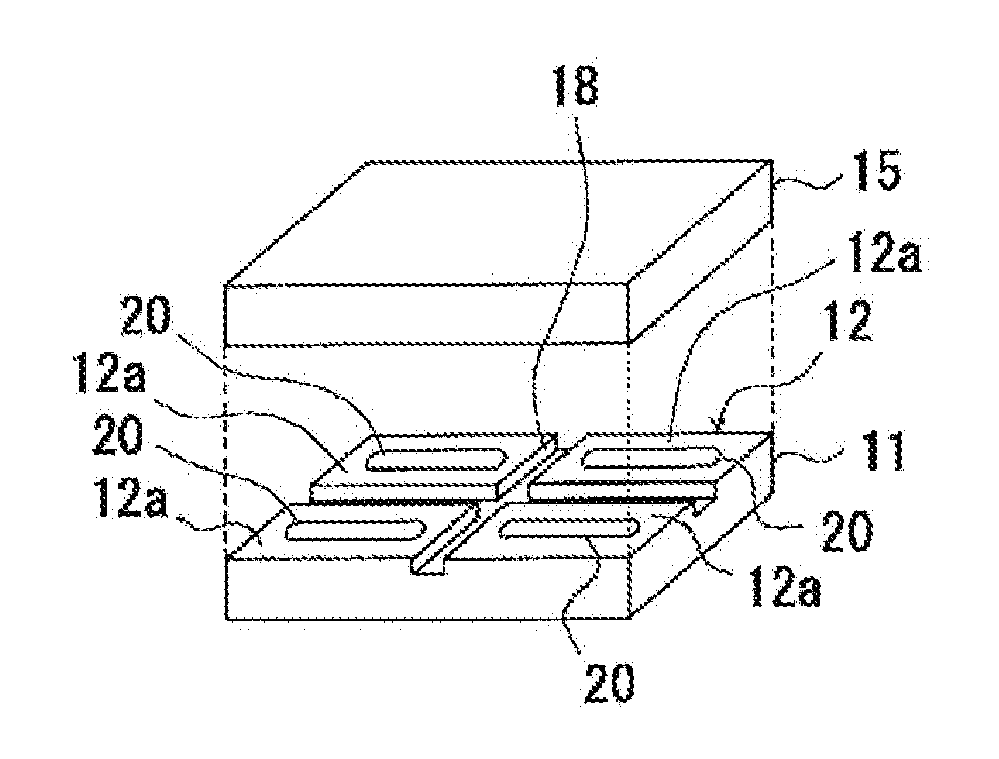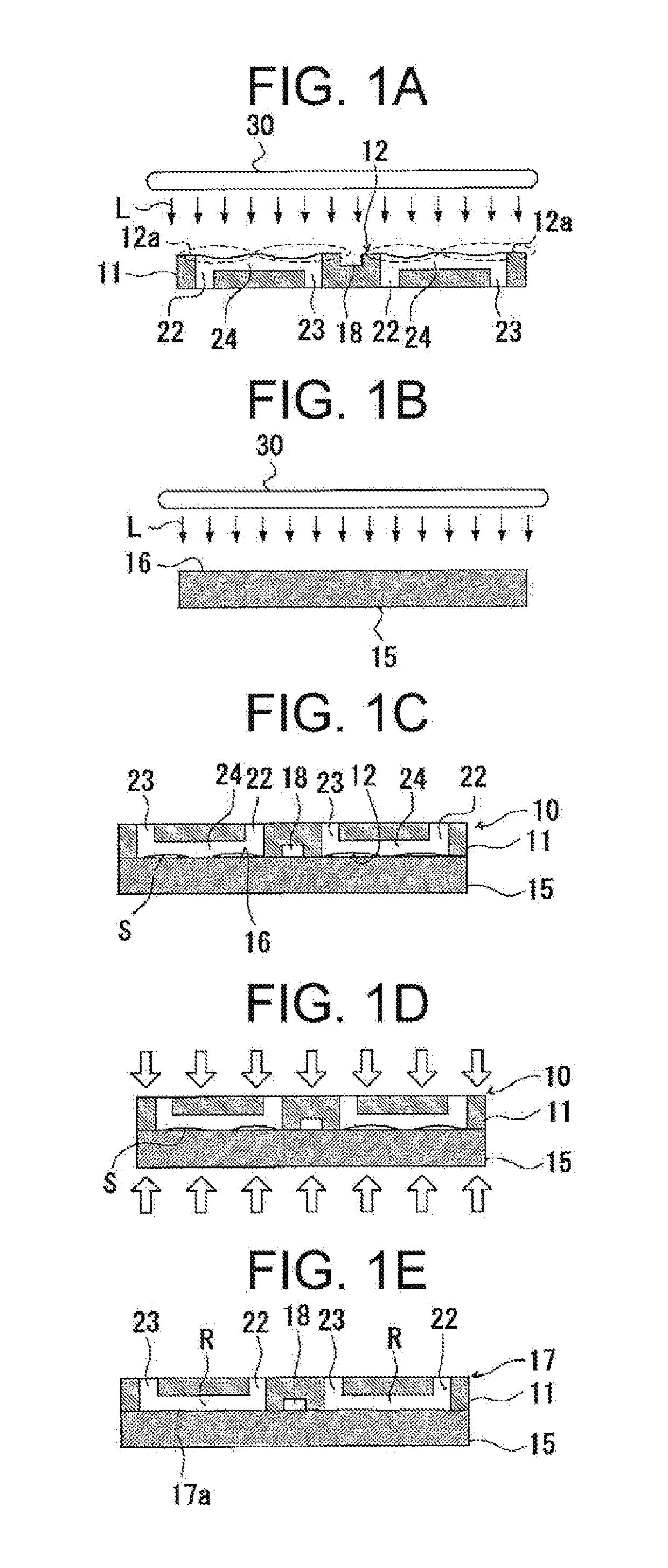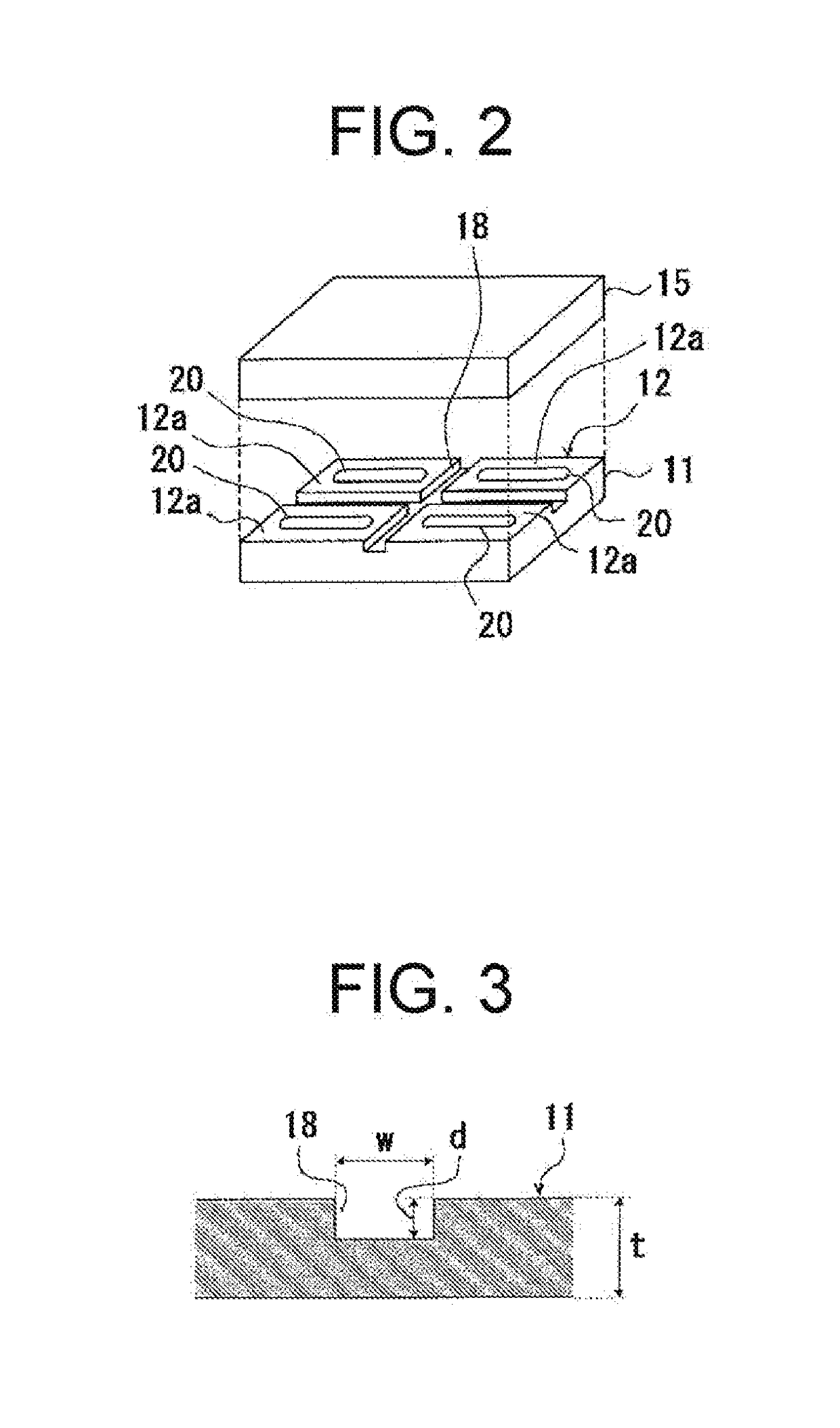Method of bonding substrates, microchip and method of manufacturing the same
- Summary
- Abstract
- Description
- Claims
- Application Information
AI Technical Summary
Benefits of technology
Problems solved by technology
Method used
Image
Examples
working examples
[0172]Hereinafter, working examples of the method of bonding substrates according to the present embodiment will be described in detail below. Nevertheless, it should be noted that the present invention is not limited to the following working examples.
working example 1
[0173]The first substrate and the second substrate were prepared as follows.
[0174]FIG. 7 is a view illustrating the first substrate prepared according to the working example 1. A first substrate 41A has a profile conforming to the SBS standard (i.e., 85 mm×128 mm). On one face of a plate having the thickness of 2 mm and made of the cycloolefin resin (“ZEONEX 460R” manufactured by ZEON Corporation), a peripheral recessed portion 49A and a segmenting groove 48A are formed by the injection molding. The peripheral recessed portion 49A and the segmenting groove 48A are formed such that six rectangular joining regions 42aA, each having a profile of 36 mm×36 mm, are residually arranged as convex portions in two lines and three columns in parallel longitudinally and transversely.
[0175]The segmenting groove 48A has the width of 2 mm and the depth (that is, the distance from the joining regions 42aA to the innermost portion of the segmenting groove 48A) of 1 mm. Likewise, the peripheral reces...
working example 2
[0180]Two substrates were joined and the joined body [B] were obtained similarly to the working example 1, except that the first substrate was prepared as follows.
[0181]FIG. 8 is a view illustrating the first substrate prepared according to the working example 2. A first substrate 41B has a profile conforming to the SBS standard (i.e., 85 mm×128 mm). On one face of a plate having the thickness of 2 mm and made of the cycloolefin resin (“ZEONEX 460R” manufactured by ZEON Corporation), a peripheral recessed portion 49B and a segmenting groove 48B are formed by the injection molding. The peripheral recessed portion 49B and the segmenting groove 48B are formed such that twelve elongated rectangular joining regions 42aB, each having a profile of 18 mm×36 mm, are residually arranged as convex portions in two lines and six columns in parallel longitudinally and transversely.
[0182]The segmenting groove 48B has the width of 2 mm and the depth (that is, the distance from the joining regions 4...
PUM
| Property | Measurement | Unit |
|---|---|---|
| Thickness | aaaaa | aaaaa |
| Pressure | aaaaa | aaaaa |
| Width | aaaaa | aaaaa |
Abstract
Description
Claims
Application Information
 Login to View More
Login to View More - R&D
- Intellectual Property
- Life Sciences
- Materials
- Tech Scout
- Unparalleled Data Quality
- Higher Quality Content
- 60% Fewer Hallucinations
Browse by: Latest US Patents, China's latest patents, Technical Efficacy Thesaurus, Application Domain, Technology Topic, Popular Technical Reports.
© 2025 PatSnap. All rights reserved.Legal|Privacy policy|Modern Slavery Act Transparency Statement|Sitemap|About US| Contact US: help@patsnap.com



